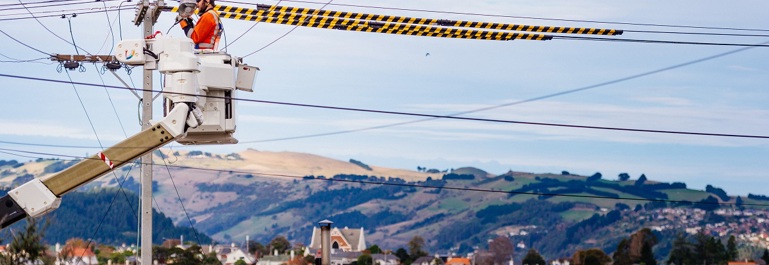If you're looking to disconnect your electricity, you'll need to think about whether this is temporary or permanent.
Temporary disconnections
This is the most commonly requested type of disconnection. If you're doing any property maintenance near the service line from our network to your house, then you'll need to request a temporary disconnection of power. This will keep you safe from electrocution if you're re-roofing, painting, trimming trees or any other type of work near the service line.
You'll need to allow five working days for us to process your request. It's a free service on private properties and is available between 8am and 5pm, Monday to Friday. Disconnection can happen outside these times, but you will be charged for this.
They will pull the fuse at the pole or pillar to disconnect the power supply to the house. They'll also leave a tag to ensure that other utility providers or contractors know your place has been temporarily disconnected.
Once you've finished the work, let the Approved Contractor know and they will come back to put the fuse back in and remove the tag.
Remember to keep safe when working around power lines and cables.
Get in touch with us to set up your temporary disconnection.
Permanent disconnections
If you want to permanently disconnect from the network, say you're demolishing or removing a house or you're wanting to go "off-grid" with no network supply as a backup, then you'll need to let your electricity retailer know.
Your electricity retailer will contact one of our Approved Contractors to arrange the disconnection. The retailer will commence the process of updating records including managing the final stages of the billing process.
For overhead connections, our approved contractor will remove the fuse and disconnect the service cable from the pole and remove it from the site.
For underground connections, our Approved Contractor will remove the fuse from the pillar and the cable boundary from the ground.
Both overhead and underground connections will then have the supply tested to ensure that the connection is no longer live.
Close approach approval
For your safety, if you're planning to work within four metres of overhead lines or are excavating within five metres of a power pole you'll need close approach approval. Find out more here.
